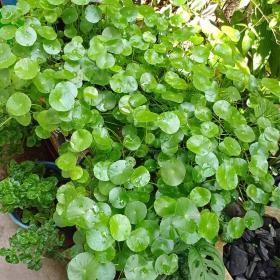Gotu Kola (Centella Asiatica; also known as Hydrocotyl) is a weakly aromatic-smelling plant native to parts of India, China, Indonesia, Sri Lanka, the western South Sea Islands, Australia, Madagascar, and southern and middle Africa (Bonati 1980, Madaus 1938). It has been a medicine in India since prehistoric times (Castellani, Lavernhe, and Dellengach 1966).
In the 19th century, Centella Asiatica and its extracts were incorporated into the Indian pharmacopeia (Madaus 1938) and recommended not only for wound healing but especially for the treatment of skin lesions and diseases such as leprosy, four lupus, eczema, and psoriasis. The Chinese prescribe Hydrocotyl (Kan 1986) for fractures, strains, and snakebites.
According to folk medicine of Madagascar, Sri Lanka, and India, extracts of Gotu Kola have been used for the treatment of leprosy, varicose ulcers, lupus, and certain obstinate eczemas (Abou-Chaar 1963 and Boiteau and Ratsimamanga 1956). Plant extracts were accepted as a drug in France during the 1880’s. Since then, extracts or fractions from Hydrocotyl have been used therapeutically and clinically as infusions or poultices for the treatment of the lesions of leprosy (Wolfram 1965).
More recent experimental pharmacological investigations, clinical observations, and case studies have confirmed a positive contribution of Hydrocotyl extracts to the healing of skin wounds, burns, and ulcerous abnormalities in the lower extremities, to the cure of stomach and duodenal ulcers, and to the treatment of leprosy, lupus, scleroderma, and diseases of the veins (Anonymous 1945a,b and Royer 1962).